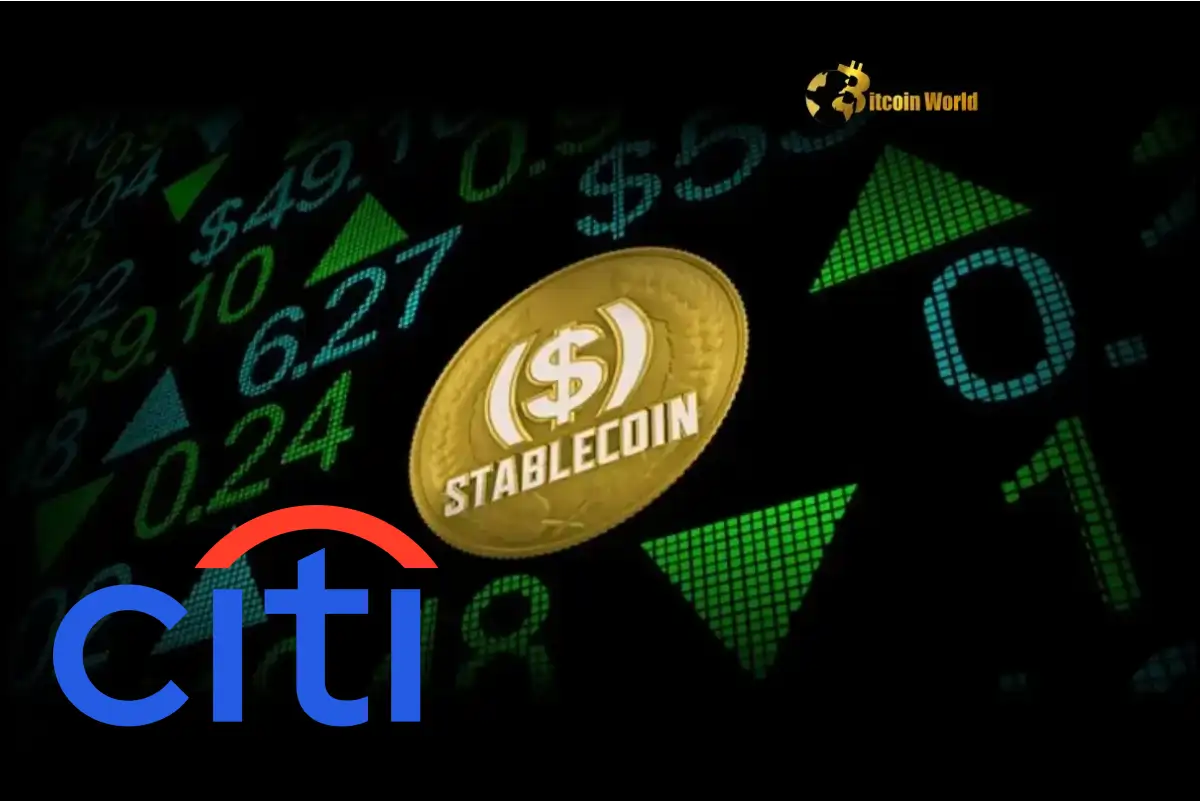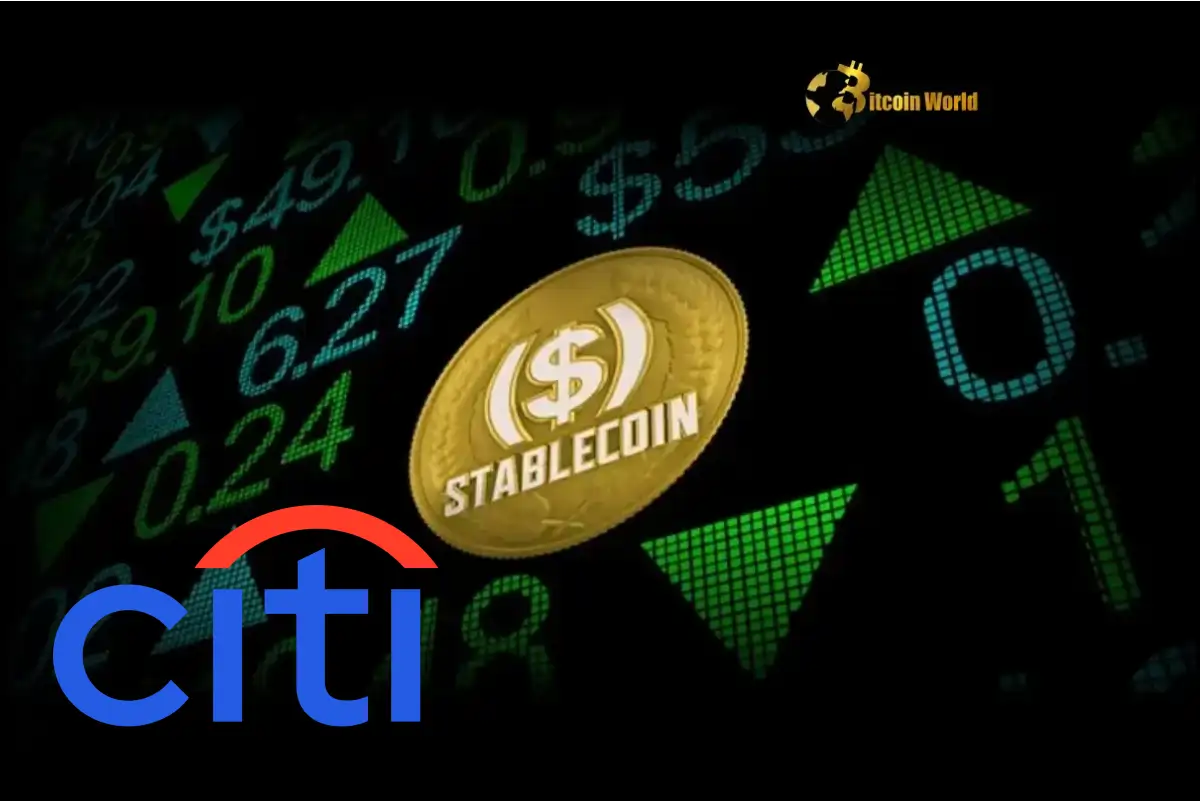Are Stablecoins set to become a cornerstone of the global financial system? A groundbreaking projection from a major financial institution suggests this is not only possible but likely within the next few years. Citi, in its recent Future Finance report, has put forward a bold vision where stablecoins could start replacing significant portions of existing U.S. and international currency holdings by 2030. This isn’t just about crypto trading anymore; it signals a fundamental shift in how money could move around the world.
What Does the Citi Report Project for Stablecoins?
The core finding from the Citi report, as highlighted by CoinDesk, is the sheer scale of the potential growth. By 2030, the report estimates that the stablecoin market could swell to a staggering $1.6 trillion. To put that in perspective, this isn’t just a marginal increase; it represents a substantial integration into the global financial fabric. The projection isn’t made in a vacuum; it’s based on anticipated drivers that could accelerate adoption significantly.
Key takeaways from the report’s projection include:
- A market size reaching $1.6 trillion within approximately five years.
- The potential for stablecoins to displace or replace a portion of traditional currency reserves held globally.
- A shift in the primary use cases for stablecoins, moving beyond speculative crypto trading.
This forecast from a major player like Citi underscores the growing recognition of stablecoins’ utility and potential impact on the broader economy.
Driving Forces Behind the Digital Currency Revolution
What factors does the Citi report identify as catalysts for this rapid expansion? Two primary forces stand out: regulatory support and increased institutional use. Think of it this way: for any new financial technology to gain widespread adoption, it needs clear rules of the road and buy-in from the big players.
Regulatory Support: As regulators around the world gain a better understanding of stablecoins, clearer frameworks are beginning to emerge. This clarity is crucial because it provides a level of certainty and legitimacy that encourages broader adoption. When businesses and financial institutions know the rules, they are more likely to participate. Potential regulations could address everything from issuance standards and reserve requirements to consumer protection, building trust in the ecosystem.
Institutional Use: We are already seeing major financial institutions and corporations exploring and using stablecoins. This isn’t just about banks; it includes payment processors, corporate treasuries, and asset managers. As more large entities integrate stablecoins into their operations, it creates network effects, making stablecoins more useful and accessible for everyone. Institutional adoption often signals maturity and reliability to the wider market.
These two forces working in tandem are expected to pave the way for stablecoins to move from the periphery of the crypto world into mainstream finance.
Expanding Horizons: Use Cases Shaping the Future of Finance
The report highlights that the projected growth isn’t just about more people buying and selling stablecoins on crypto exchanges. The real transformation lies in their expanding utility across various financial activities. Stablecoins are poised to become fundamental building blocks in the future of finance, enabling more efficient and cost-effective transactions.
Consider these key areas where stablecoins are making inroads:
- Payments: Whether domestic or cross-border, stablecoins offer the potential for faster, cheaper, and more transparent transactions compared to traditional methods. Imagine instant settlement for business-to-business payments or retail purchases.
- Remittances: Sending money across borders is often slow and expensive. Stablecoins can dramatically reduce fees and transfer times, making it easier and more affordable for individuals to send money to family and friends internationally.
- Corporate Finance: Companies are exploring stablecoins for treasury management, supply chain finance, and facilitating payments between subsidiaries. This can unlock trapped capital and streamline complex financial operations.
Evidence of this shift is already visible. Firms like Fireblocks, a digital asset platform, have reported rapid growth in stablecoin payment volumes. This isn’t just theoretical; businesses are actively using stablecoins for real-world transactions today. The report even suggests that payment companies are expected to soon account for half of all stablecoin transaction volume, underscoring the move away from purely crypto-native use cases towards mainstream financial applications.
What Does This Mean for the Broader Crypto Market?
The potential mainstreaming of stablecoins, as outlined in the Citi report, has significant implications for the entire crypto market. While stablecoins are designed to maintain a stable value relative to a traditional currency, their increased adoption can have ripple effects throughout the ecosystem.
How might this impact the crypto market?
- Increased Liquidity: As stablecoins become more widely used for payments and commerce, they increase the overall liquidity within the digital asset space. This can make it easier to move value in and out of other cryptocurrencies.
- Bridge Between TradFi and DeFi: Stablecoins serve as a crucial link between traditional finance (TradFi) and decentralized finance (DeFi). Their adoption by institutions can bring more capital and participants into the DeFi ecosystem, fostering innovation.
- Validation of Digital Assets: Widespread acceptance of stablecoins by major financial players like Citi lends credibility to the broader concept of digital assets, potentially paving the way for greater acceptance of volatile cryptocurrencies like Bitcoin and Ethereum over time.
- Innovation in Crypto Infrastructure: The demand for stablecoin infrastructure (wallets, exchanges, payment rails) drives innovation and development within the crypto space, benefiting all users.
While the focus is on stable value, the infrastructure and regulatory clarity built for stablecoins will inevitably benefit the wider digital asset class.
Navigating the Path Ahead: Challenges and Opportunities
While the Citi report paints an optimistic picture, the path to $1.6 trillion and widespread currency replacement isn’t without its hurdles. Understanding these challenges is crucial for anyone looking at the future of finance.
Potential Challenges:
- Regulatory Uncertainty: While progress is being made, global regulatory frameworks are still evolving. Inconsistent or overly restrictive regulations could slow down adoption.
- Competition: Stablecoins face competition not only from traditional payment systems but also from potential Central Bank Digital Currencies (CBDCs) being explored by governments.
- Technical Risks: Ensuring the security, scalability, and reliability of stablecoin infrastructure is paramount. Smart contract risks and platform stability are ongoing concerns.
- Public Perception and Education: Many people still view stablecoins purely through the lens of volatile cryptocurrencies. Educating the public and businesses about their specific utility and stability is necessary.
- Reserve Management and Transparency: The stability of stablecoins often relies on the quality and transparency of their underlying reserves, which has been a point of scrutiny in the past.
Despite these challenges, the opportunities are significant. The potential for increased efficiency, reduced costs, greater financial inclusion (especially through remittances), and innovation in financial products and services makes stablecoins a compelling area for growth.
Actionable Insights for the Reader
Given these projections, what should you take away?
- Stay Informed: Keep track of regulatory developments and how institutions are integrating stablecoins.
- Explore Use Cases: If you run a business, research how stablecoins could potentially streamline payments or treasury operations.
- Understand the Technology: Learn the difference between various types of stablecoins (fiat-backed, crypto-backed, algorithmic) and their underlying mechanisms.
- Consider the Long-Term Impact: Recognize that the growth of stablecoins is part of a larger trend towards the digitization of finance.
A Glimpse into Tomorrow’s Money
The Citi report provides a compelling look at the potential trajectory of stablecoins. Moving beyond their origins in the crypto market, they are increasingly seen as a powerful form of digital currency with the capacity to significantly impact the future of finance. Driven by anticipated regulatory clarity and growing institutional adoption, stablecoins are poised to expand their footprint dramatically in payments, remittances, and corporate finance, potentially growing into a $1.6 trillion market by 2030 and even replacing parts of traditional currency holdings. While challenges remain, the transformative potential for efficiency, speed, and global reach is undeniable. The journey from a niche crypto asset to a potential cornerstone of global finance is underway, and stablecoins are leading the charge in this evolving landscape.
To learn more about the latest Crypto Market trends, explore our article on key developments shaping Digital Currency institutional adoption.






